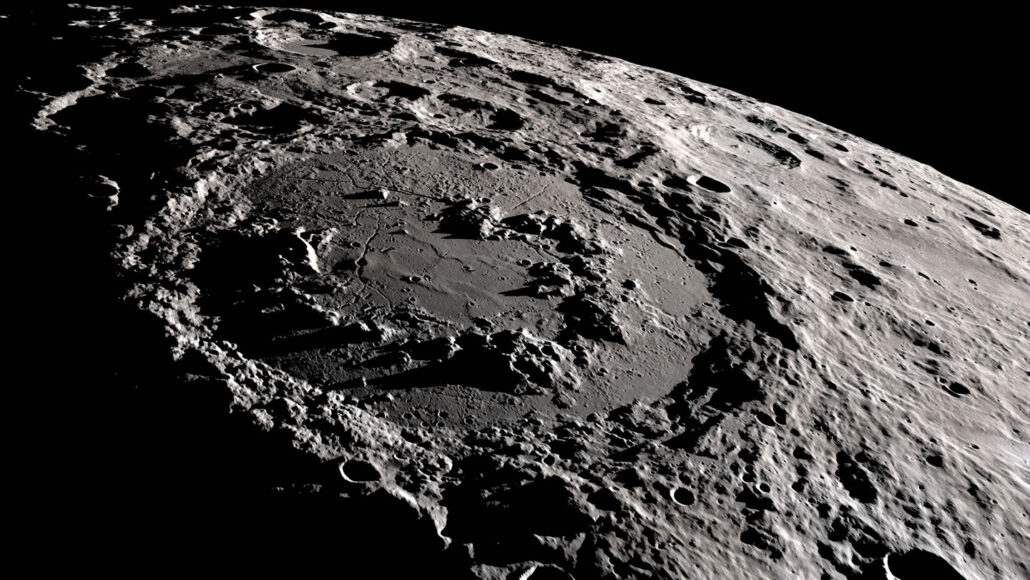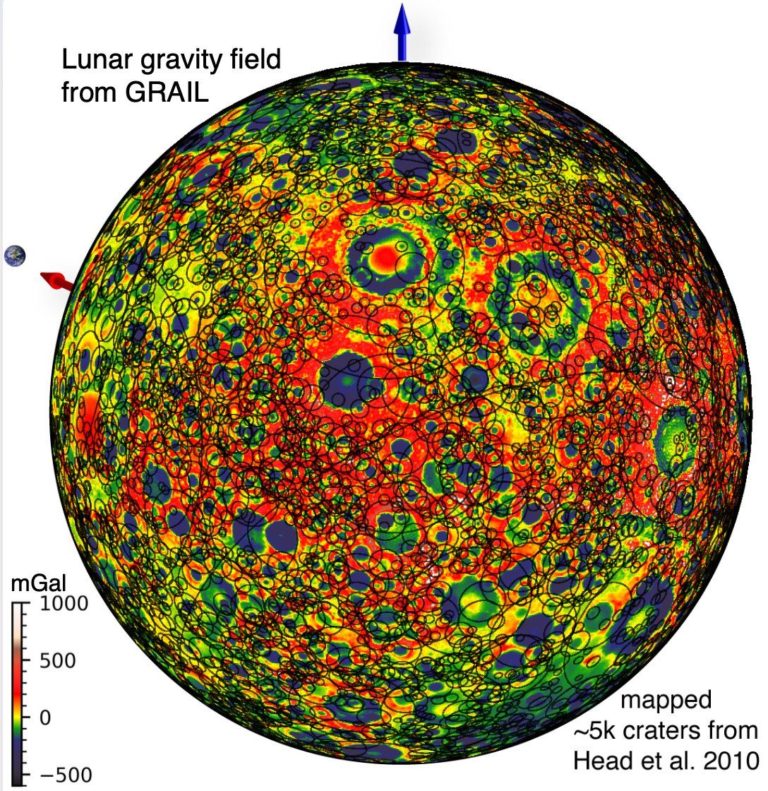Scientists have studied how, over billions of years, relatively small collisions with asteroids affected the change of the Moon’s poles. As a result, the tilt of its axis has changed by 10 degrees.

How asteroid impacts affect the rotation axis
Each collision with an asteroid can change the axis of rotation of a celestial body. Firstly, this parameter is affected by the impact pulse itself, and secondly, as a result, a crater-shaped cavity is formed, which is reflected in the distribution of masses inside the planet.
As a result, the gravitational field of the object changes. Areas where the mass has decreased due to the formation of craters are trying to move closer to the poles. Zones where there were no strong impacts, on the contrary, try to take a position at the equator, where centrifugal forces are maximum.
Especially interesting in this regard is our Moon, which has experienced many collisions with cosmic bodies over millions of years. And if the influence of the largest event that formed the South Pole — Aitken Basin has already been studied, then no one has estimated how many smaller asteroids affected the rotation of our moon.
How much have the poles of the moon shifted
Scientists from NASA’s Goddard Space Center decided to investigate this issue. Thanks to previous missions, they had a fairly accurate map of the Moon’s gravitational field and an idea of the distribution of masses inside it. In addition, they had an estimate of the impact force and the age of crater formation on its surface.

Therefore, scientists began one by one to “take away” the impacts that formed craters with a diameter of more than 20 km, moving in reverse chronological order. They were interested in how the moon’s rotation axis would change. At first, these calculations were made manually, and then computers were connected.
A total of 5,200 craters were analyzed. It turned out that their total effect is about the same as in the event that created the South Pole—Aitken Basin. In general, due to the collision with asteroids, the poles of the Moon shifted by 10 degrees.
In general, this is a small value. It shows that the ice at the poles, formed at the dawn of the Moon’s existence, did not turn to the Sun and did not evaporate. However, to be sure of this, scientists have yet to study the influence of magmatic phenomena and meteorite impacts.
According to www.sciencealert.com
Follow us on Twitter to get the most interesting space news in time
https://twitter.com/ust_magazine

